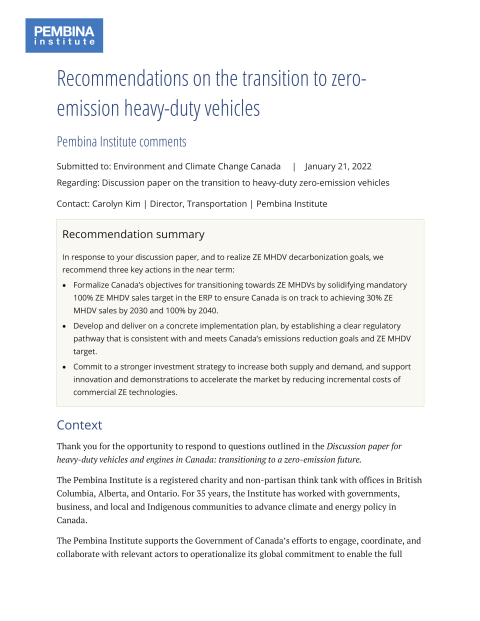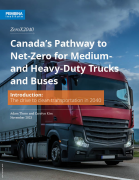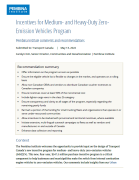The Pembina Institute supports the Government of Canada’s efforts to engage, coordinate, and collaborate with relevant actors to operationalize its global commitment to enable the full transition to zero-emission (ZE) medium- and heavy-duty vehicles (MHDVs) by 2040, and to achieve net-zero by 2050. We welcome the opportunity to respond to questions outlined in the Discussion paper on heavy-duty vehicles and engines in Canada: transitioning to a zero-emission future. Our comments are informed by over 10 years of research and thought leadership on transportation decarbonization, as well as insights from the Pembina Institute’s Urban Delivery Solutions Initiative, a national network of businesses and organizations working to create an efficient and low-carbon urban freight system in Canadian cities.
In response to the discussion paper, and to realize ZE MHDV decarbonization goals, we recommend three key actions in the near term:
- Formalize Canada’s objectives for transitioning towards ZE MHDVs by solidifying mandatory sales targets in the forthcoming Emissions Reduction Plan (ERP) to ensure Canada is on track to achieving 30% ZE MHDV sales by 2030 and 100% by 2040.
- Develop and deliver on a concrete implementation plan, by establishing a clear regulatory pathway that is consistent with and meets Canada’s emissions reduction goals and ZE MHDV targets.
- Commit to a stronger investment strategy to increase both supply and demand, and support innovation and demonstrations to accelerate the market by reducing incremental costs of commercial ZE technologies.
A clear regulatory pathway for the ZE MHDV transition offers economic benefits to Canadian businesses and their workers as well as public health benefits, especially for Canadians living in urban centres. That’s why Canada needs to swiftly develop and execute a ZE MHDV strategy.
While the federal government has begun to implement policies and programs to encourage ZE MHDV adoption and to deploy supporting infrastructure, there are considerable gaps that must be filled to support an integrated clean transportation and energy system. In the absence of a clear regulatory pathway for goods movement and an investment strategy for the ZE MHDV transition, market transformation has been slow, even for those companies that are eager to make the changes necessary for a clean economy. We’ve heard from businesses and fleet operators of various sizes that a harmonized and consistent ZEV policy framework would make their transition planning efforts easier, particularly for those that have inter-provincial or national operations. A national strategy to accelerate ZE MHDVs is especially necessary to address weak policy and market conditions in some regions.






